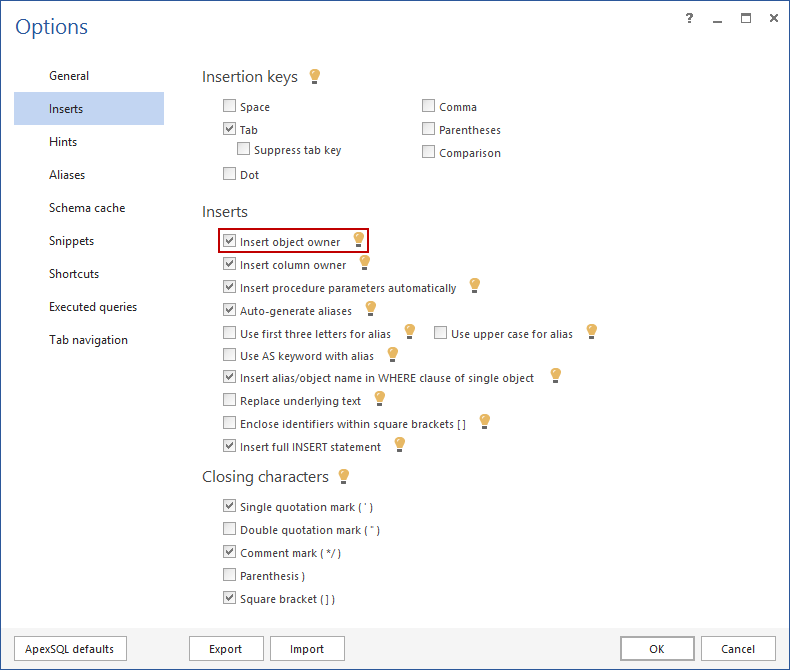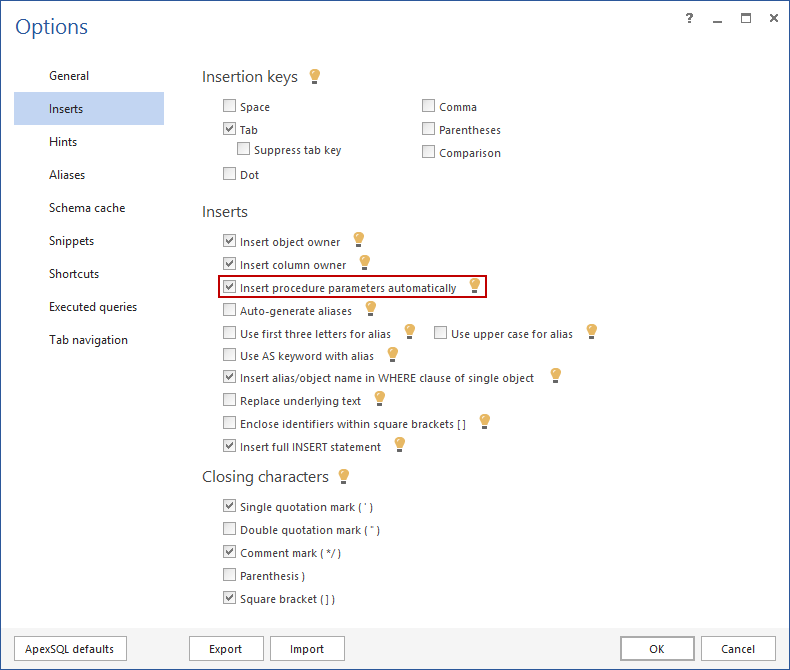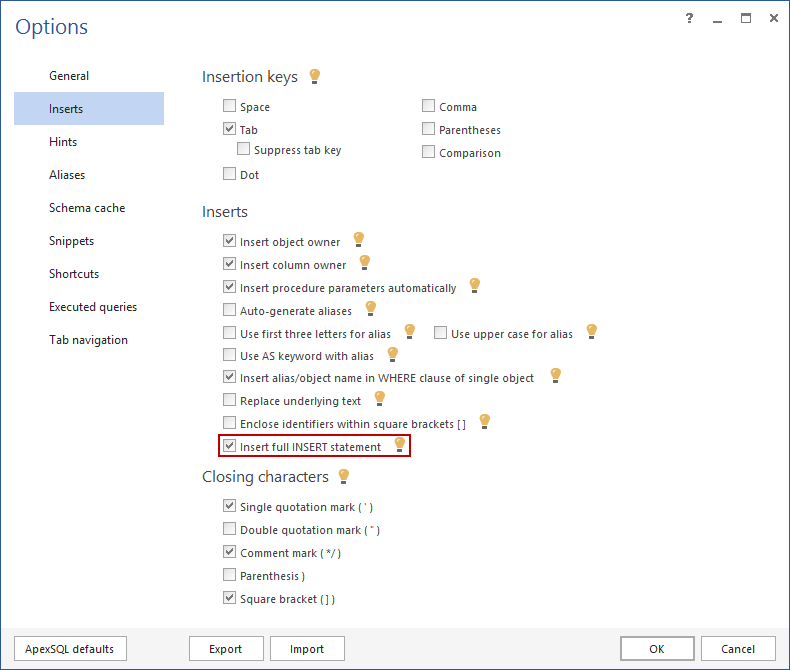Our latest ApexSQL Complete vs. SSMS article presented the main differences between ApexSQL Complete’s auto – complete feature and SQL Server Management Studio’s IntelliSense.
ApexSQL Complete auto – complete feature also has the options that are not supported by SSMS IntelliSense. We have already covered some of those options in the related articles: SQL readability basics: SQL Code structure viewer, identifier highlighting, and closing characters management which explains the Code structure feature, and SQL readability basics – Aliases and column lists which describes the Auto-generate aliases option.
In this article we will describe more ApexSQL Complete auto – complete feature options not supported by SSMS IntelliSense.
The Insert Object Owner option
Schema qualifying object names improves performance and prevents code ambiguity
In the Options dialog and check-in the Insert Object Owner option:
When the Insert Object Owner option is activated the name of the SQL object selected from the auto-complete list will be schema qualified automatically:
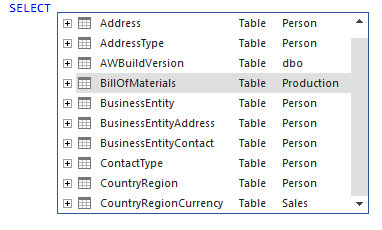
When ApexSQL Complete connects to a database it reads the data about every object in the database. After parsing, every object is stored in memory with the information about which database and schema it belongs. With this option ApexSQL Complete is able to automatically add the schema/owner to the selected object:

The Insert procedure parameters automatically option
Another useful option in ApexSQL Complete is available when executing stored procedures. When the Insert Procedure Parameters Automatically option is activated input parameters of the stored procedure are displayed in the correct order which saves time for typing and remembering all input parameters for all stored procedures.
In the Options dialog check–in the Insert Procedure Parameters Automatically option:
Typing the EXEC keyword in the query editor and pressing the Tab or the Space key will show the auto-complete list with all available functions and stored procedures:
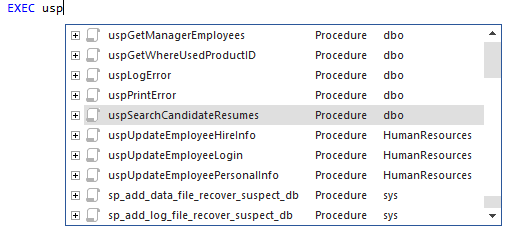
ApexSQL Complete parses the chosen procedure and loads containing parameters. Based on the template and to complete a procedure that is predefined in the code, ApexSQL Complete creates a procedure statement displaying all procedures input parameters in the correct order:

The Insert full INSERT statement option
Writing the INSERT statement for a table with many columns is a frustrating task. It requires user to write out all the columns, and then to be sure about the order of values passed in the VALUES list. ApexSQL Complete has an option to expand the INSERT statement to the full template.
In the Options dialog check-in the Insert full INSERT statement option:
To use this option type INSERT statement in the query window:
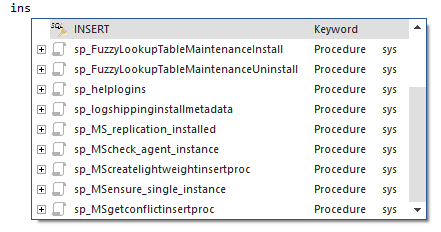
By pressing the Tab or the Space key this feature allows choosing from the list of all available table names in the INSERT statement:
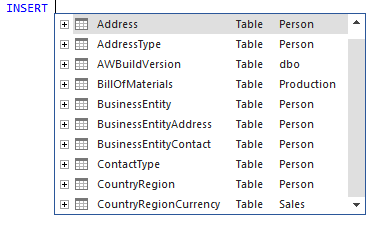
Double-click on the selected table will expand the INSERT statement to the full template. ApexSQL Complete parses the table chosen from the auto-complete list and loads the table column list as well as the column types. Afterwards based on a predefined template for the INSERT statement ApexSQL Complete creates a statement, distributes columns order, prints comments, and fills datetime fields automatically with the default date:

See also:
ApexSQL Complete vs. SSMS – Part 1 – Object recognition
ApexSQL Complete vs. SSMS – Part 2 – Auto-complete DDL and DML statements
ApexSQL Complete vs. SSMS – Part 3 – Creating and using T-SQL code snippets
ApexSQL Complete vs. SSMS – Part 4 – SSMS Intellisense add-in and native SSMS Intellisense
October 18, 2013



